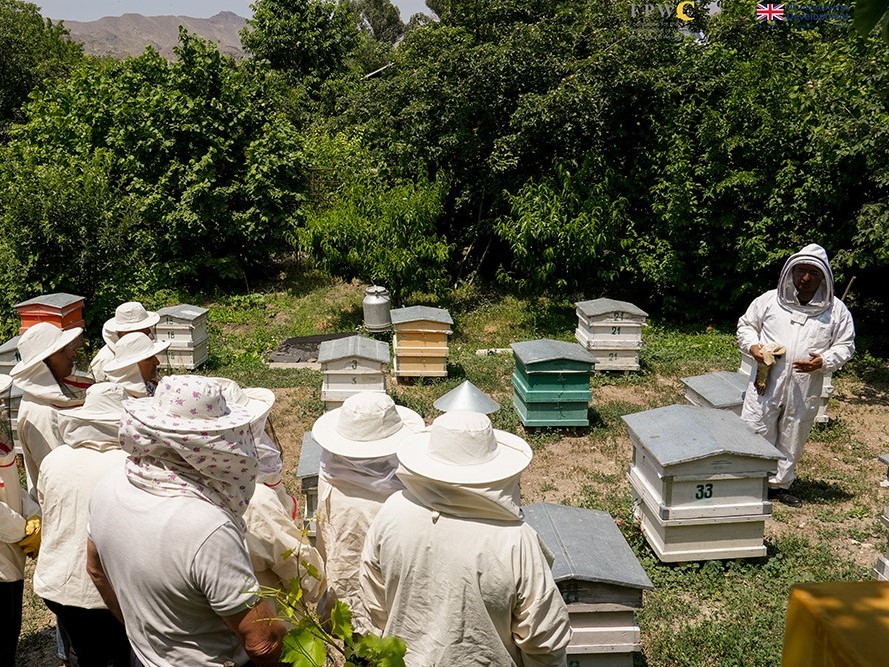Building bear-friendly landscapes in Armenia

On-the-job training for beneficiary beekeepers in Vayots Dzor. Credit – Foundation for the Preservation of Wildlife and Cultural Assets.
From conflict to coexistence in Armenia’s bear country
In Armenia’s Vayots Dzor region, the majestic Brown bear – once a symbol of wilderness – is increasingly perceived as a threat. Climate change, food scarcity, and human encroachment are driving bears into villages, damaging crops and beehives, and escalating tensions. Our project is building long-term coexistence of humans and bears through community-based conflict mitigation, sustainable livelihoods, and an ambitious model of privately protected area expansion.
Expanding stewardship through the Caucasus Wildlife Refuge
At the heart of our approach is the continued expansion of the Caucasus Wildlife Refuge, Armenia’s only privately protected area. This innovative conservation model, managed by Foundation for the Preservation of Wildlife and Cultural Assets (FPWC) in collaboration with local landowners and communities, currently spans over 30,000 ha and is set to grow further.
The Caucasus Wildlife Refuge is more than a protected area: it is a platform for stewardship. Local villagers and decision makers contribute community lands for conservation and habitat protection, guided by a long-standing belief that living with nature begins with caring for it. Central to this model are local rangers, trained and equipped by FPWC, who act as frontline defenders of both wildlife and people. Their daily responsibilities include monitoring biodiversity, recording bear activity and behavioural changes, responding to conflict incidents, deterring poaching, and engaging residents in habitat protection. This consistent presence on the ground has significantly reduced illegal activities and fostered a visible, trusted commitment to conservation.
By expanding the refuge to incorporate additional habitat corridors and degraded lands, the project is securing vital movement routes for bears and helping reduce the likelihood of human-wildlife encounters.

Beehives for harmony: Tackling conflict at the source
Beekeepers are among the groups most vulnerable to bear conflict, as their hives are frequently raided during periods of food scarcity. Rather than relying solely on physical deterrents, our project invests in capacity building to help beekeepers become active participants in coexistence with bears.
To date, we have conducted human-wildlife conflict mitigation training for over 400 individuals across the Yeghegis valley, enhancing local knowledge and skills to implement non-lethal, sustainable solutions. Additionally, more than 150 aspiring or startup beekeepers were trained in both starting beekeeping operations and implementing bear-safe practices, and 30 selected beneficiaries received tailored mentoring to improve hive protection, productivity, and resilience.
Importantly, this support is paired with a broader message: that conservation and rural livelihoods are not at odds, and instead they can reinforce one another. Many participants, particularly women, have expressed a desire to grow their businesses. Those with a more entrepreneurial focus have signed up for business-oriented mentorship, aiming to scale up their beekeeping operations while contributing to bear-friendly landscapes.


Beyond the project: A legacy of coexistence
The project’s impact goes far beyond its initial timeframe. Alongside building local capacity and public awareness, we are working closely with local, regional, and national authorities to advocate for improved legislation and enforcement related to human-wildlife conflict. These efforts aim to support the development of a coherent national strategy, grounded in science, community engagement, and practical enforcement mechanisms.
We are also building cross-sectoral partnerships to address the root causes of conflict. In collaboration with telecommunications providers like Ucom, we are delivering direct support to vulnerable households, including the installation of electric fences to protect private property from bear raids. This innovative partnership model blends conservation with corporate social responsibility, helping alleviate pressure on both wildlife and rural families.
In addition, we are piloting alternative energy solutions, such as solar heating systems, to reduce reliance on wood fuel. This initiative not only helps mitigate illegal logging in potential Caucasus Wildlife Refuge expansion areas but also reduces household energy costs – freeing up resources for education, healthcare, and infrastructure improvements in remote communities.
Together, these efforts are shaping a resilient, scalable model – one that can be replicated across Armenia and adapted for other species and regions facing similar climate-induced pressures.
Written by Tsovinar Hovhannisyan. For more information on this Darwin Initiative Main project 31-010, led by Foundation for the Preservation of Wildlife and Cultural Assets, please click here.

 Meeting with local and regional stakeholders in Vayots Dzor. Credit – FPWC.
Meeting with local and regional stakeholders in Vayots Dzor. Credit – FPWC. Equipment provision to beneficiary beekeepers. Credit – FPWC.
Equipment provision to beneficiary beekeepers. Credit – FPWC.
 Back
Back